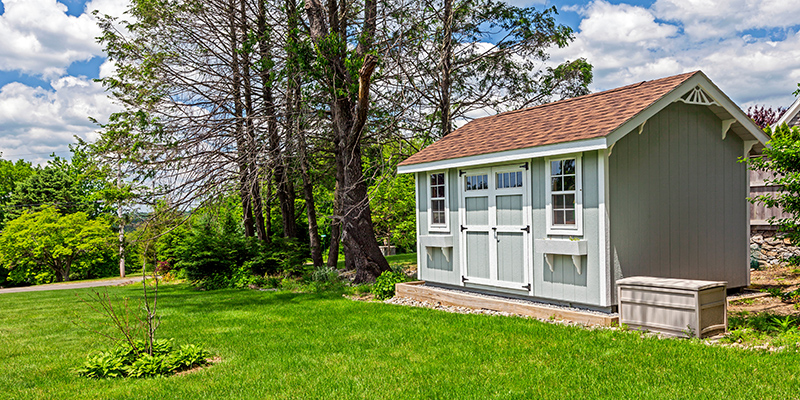What Are Robert’s Rules Of Order Incidental Motions?

In Robert's Rules of Order, incidental motions are crucial to protecting the meeting structure and ensuring it flows smoothly. Members of organizations, including HOAs, would benefit from learning these motions and how they work.
Browse By Category
Sign up for Our Newsletter
In Robert’s Rules of Order, incidental motions are crucial to protecting the meeting structure and ensuring it flows smoothly. Members of organizations, including HOAs, would benefit from learning these motions and how they work.
Robert’s Rules of Order: Types of Incidental Motions
Incidental motions in Robert’s Rules are parliamentary motions that occur incidentally while considering other business. These motions tackle questions and processes that are relevant to the main motion being discussed. Unlike privileged motions, incidental motions are not superior to the main motion in terms of priority. On the contrary, they are second to the main motion, and the assembly deals with them as they come up.
Below, we discuss the types of Robert’s Rules of Order incidental motions.
Point of Order
- Objective: To rectify a violation of rules.
- Needs a second? No.
- Debatable? No.
- Reconsideration possible? No.
- The presiding officer rules the outcome.
- Outcome: The ruling chair’s decision prevails unless a member repeals the decision.
The purpose of a point of order is to correct a rule violation when the person in charge doesn’t address it or breaks a rule themselves. It’s not meant for small violations and should be brought up right when they happen. If the problem continues, members can raise a point of order anytime.
Appeal from the Decision of the Chair (Appeal)
- Objective: To go against the chair’s ruling, enabling members to vote on the opposition.
- Needs a second? Yes.
- Debatable? Yes, but anything that concerns the order of business, the rules of speaking, or a ruling on an undebatable motion is not open to debate.
- Amendable? No.
- Reconsideration possible? Yes.
- The motion must occur upon the ruling.
- In the event of a majority or tie vote, the chair’s ruling stays.
- Outcome: The chair’s ruling either stays or is repealed.
In Robert’s Rules of Order, a motion to appeal must occur right after the chair makes a decision. The chair talks first about the appeal, then other members share their thoughts, and finally, the chair gets the last word before the vote. A majority vote is necessary to agree with the chair’s decision. If members back the chair, the business continues following the ruling.
Requests and Inquiries
Members can obtain information without making formal motions by using requests and inquiries. A parliamentary inquiry allows members to ask questions about parliamentary procedures, and the chair responds. Another way is through a point of information, where members ask for details about the ongoing topic of discussion. All these requests and inquiries are directed to or through the chair.
Request for Permission to Withdraw or Modify a Motion
- Objective: Withdraws or amends a motion without a formal vote.
- Needs a second? Yes, if amending the motion. No, if only seeking permission to withdraw.
- Debatable? No.
- Reconsideration possible? Yes, but only the negative vote in withdrawing the motion.
- General consent vote is necessary when seeking permission to withdraw.
- Outcome: Withdrawal takes back the motion as if it was never proposed. Modification amends the motion, which is what is presented to the assembly.
Before the chair announces a motion, the person who proposed it can freely retract or adjust it without needing assembly approval. Once the chair declares the motion, it becomes the assembly’s, and the proposer must seek permission to modify or withdraw it.
If the chair hasn’t yet stated the motion, the proposer can withdraw it without needing the consent of the seconder. However, changing the motion requires the seconder’s approval. Should they withdraw their support, someone else must second it.
If someone wants to suggest a change before the chair states the motion, they can request the proposer’s permission. If granted, the altered motion is pending, similar to a friendly amendment.
When a motion is under discussion, the proposer needs assembly permission to withdraw it. If there’s an objection, a vote must take place. The secretary does not record withdrawn motions in the minutes unless they carry over from a previous meeting.
Request to Be Excused From a Duty
- Objective: Excuses a member from their bylaw-specified duties with the consent of the assembly.
- Needs a second? Yes, if the member asking to be excused proposes it. No, if another member proposes it.
- Amendable? Yes.
- Debatable? Yes.
- Majority vote required? Yes, usually resolved via general consent.
- Outcome: Upon approval, a member is excused. At this point, only the negative vote is open to reconsideration.
When members can’t fulfill their assigned responsibilities as the bylaws require, they must formally seek assembly permission to be excused. Members can decline without needing assembly approval for duties that are not mandatory.
If a member cannot continue their duties during their term or committee service, they should submit a resignation to the secretary. The chair then presents the resignation for a vote. The member cannot relinquish their duties until the acceptance of their resignation.
Object to Consideration of a Question
- Objective: Prevents the discussion of a main motion.
- Needs a second? No.
- Debatable? No.
- Two-thirds negative vote required? Yes.
- Reconsideration possible? Only the negative vote.
- Outcome: If two-thirds vote against, the assembly may not discuss the motion in the current meeting. However, a member may propose it again in a subsequent meeting.
Members should not use this motion to prolong proceedings. It is only justified if a member thinks the motion might create disagreement within the assembly. Anyone, including the presiding officer, can voice this objection.
The chair swiftly decides whether to entertain the motion. If a member objects, they must do so before any discussion begins. To support the objection, a two-thirds vote against consideration is necessary.
Division of the Assembly
- Objective: To express doubt about the result of a vote.
- Needs a second? No.
- Debatable? No.
- Outcome: The assembly immediately retakes a vote using a different method from the original one.
Division of the Question
- Objective: Divides a motion with several independent topics into separate motions. Applies to main motions and their amendments.
- Needs a second? Yes.
- Amendable? Yes.
- Debatable? No.
- Majority vote required? Yes.
- Reconsideration possible? No.
- Outcome: It divides the motion, enabling the assembly to discuss each part separately.
A member should avoid bundling various tasks or going into too much detail under a single motion without organizing their thoughts properly. In such situations, it is crucial to break down the question into distinct parts for better clarity and structure.
Suspend the Rules
- Objective: Temporarily suspend an assembly rule. This does not apply to bylaws, the corporate charter, fundamental parliamentary law principles, or rules that protect the rights of individual members and absent members.
- Needs a second? Yes.
- Debatable? No.
- Amendable? No.
- Vote required? A two-thirds vote is necessary to suspend a parliamentary order or order of business. A majority vote is necessary to suspend a standing rule.
- Reconsideration possible? No.
- Outcome: Rules are suspended temporarily, letting members act against the typical rules.
Members use the motion to suspend the rules to deal with a particular business item that deviates from its standard agenda order or to waive a procedural or regular standing rule. However, it’s important to note that members cannot suspend rules that pertain to fundamental principles of parliamentary law.
The Final Word
In Robert’s Rules of Order, incidental motions are valuable for members of various organizations, including HOAs. When members familiarize themselves with these motions, they can conduct meetings efficiently and adhere to established standards with ease.
Up Next:
- Robert’s Rules Of Order Renewing A Motion: What To Do
- Robert’s Rules Of Order Officers: What Do They Do?
- Robert’s Rules Of Order Election Of Officers: How It Works
Trending Now
Related Article
Sign up for Our Monthly Newsletter
Sign up below for monthly updates on all HOA Resource
















